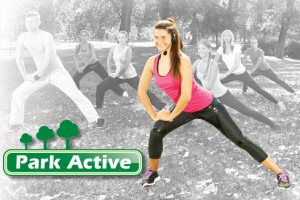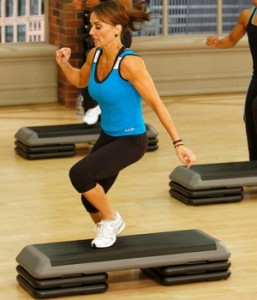

Posted on August 8th, 2012 by Active4Less | Category: Club News | Permalink
The active4less blog is a recent addition to the Club website and we hope will rapidly become a key source of Club news and updates, as well as providing interesting and stimulating health and fitness content. We hope to be able to showcase new exercise techniques and theory, reminding you that the main principle of exercise is overload, where overload can simply be changing your exercise programme regularly.
We will also be providing you with the latest thinking surrounding nutrition and fat loss. Once again reminding you that either exercise or diet alone will give slower results for fat loss and health than the exponentially greater results achieved through a combination of exercise and sound nutrition.
Make today count.
Tags: news
Posted on July 26th, 2012 by Active4Less | Category: Club News > Stevenage | Permalink
 Remember the fun you used to have playing outdoors? You’re never too old to get outdoor and get active.
Remember the fun you used to have playing outdoors? You’re never too old to get outdoor and get active.
Park Active achieves all these in the great outdoors and provides an alternative to gym based exercise if you are looking for a new challenge. Park Active is delivered by Active4less, so in line with all our services it offers great value and great trainers. Have a look through our site to find out more about the benefits of Park Active and how to get started.
Park Active classes take place in Burymead Park, Stevenage.
Tags: circuits, fitness, news, park active, stevenage, training
Posted on July 23rd, 2012 by Active4Less | Category: Challenge Central | Permalink
Check out the new Challenge Central promotional video below if you are still not a member. Remember that Challenge Central is free to all active4less members. It is great for motivation and meeting new friends.
If you are already a member, then take a look to remember some of the moments you have already shared.
Tags: challenge central
Posted on July 22nd, 2012 by Active4Less | Category: Articles | Permalink
 We’ve all heard this expression on many occasions round the football pitch on the squash court, even in the gym, but what does it really mean? A pulled muscle refers to a tear in the muscle. Tears can be either sudden and acute or long term and chronic.
We’ve all heard this expression on many occasions round the football pitch on the squash court, even in the gym, but what does it really mean? A pulled muscle refers to a tear in the muscle. Tears can be either sudden and acute or long term and chronic.
Acute muscle tears happen suddenly and cause immediate pain. At some stage your probably all seen images of footballer pull up on the pitch or athletes in a race fall away to the side of the track. These are acute muscle tears and cause immediate loss of function. Swelling will occur which can be reduced through immediate rest, ice, compression and elevation. You must let these acute muscle tears heal before you resume similar strenuous exercise. There will always be less demanding remedial exercises that can be prescribed to promote healing. This type of muscle tear can be caused by lack of an effective warm up prior to exercise, stress and fatigue and imbalances in opposing muscles.
Chronic muscle tears develop of time and often occur because of an unwillingness to rest or adapt the exercise that aggravates the muscle tear. This type of tear is particularly common in athletes participating in endurance exercise, such as cycling and running. The pain often start mild and builds during exercise, warmth in the muscle can often disguise the full impact of the tear. An occasions the torn muscle will go into a spasm to protect itself from further use and damage. Do not ignore the warning signs. This is the time to stop. As with acute tears, you must refrain from the exercise that aggravates the injury and allow for remedial treatment and repair. Stretching, mobilisation, strengthening and massage can all be of benefit.
Tags: fitness, injury, muscles
Posted on July 16th, 2012 by Active4Less | Category: Articles | Permalink
 The advantages of Interval Training compared to continous training are vast:
The advantages of Interval Training compared to continous training are vast:
A) Increased cardiovasuclar strength (fitness in general)
B) More calories burnt
C) Greater enjoyment
So it’s better for you, it burners more calories and it’s more enjoyable! Why isn’t everyone doing it??
Interval training refers to two or more different levels of intensity. Continuous training refers to training which is kept at the same level of intensity for the duration of the exercise. Interval training allows us to switch between intensity levels. There are all sorts of types of interval training, the two most famous being the fartlex training and tabata training but they are all based on the same principle of changing the level of effort throughout a session.
The general idea of interval training is to increase the level of effort for a short period of time to level which can not be sustained for long. For example if continuous training was set at 70% of MHR (maximum heart rate) we would interval train by working at a higher level of say 85 – 95% for a minute, before allowing the heart rate to drop down to around 50-60%.
Everyone. There are no set rules for how hard or long the intervals need to be set at, so interval training can be used on all levels of level of fitness and experience. Interval training is bread and butter for an professional athlete or anyone looking to increase their performance in sport and/or their cardiac output and lactate tolerance.